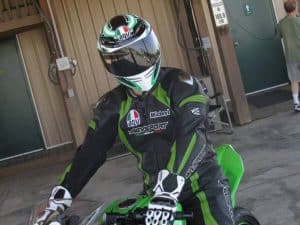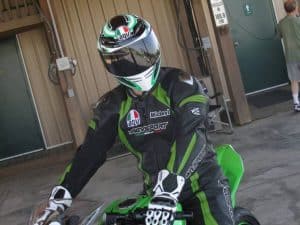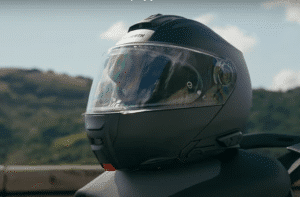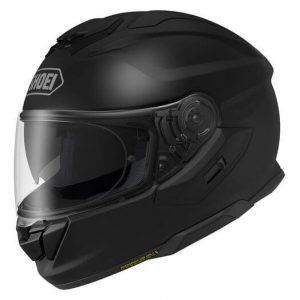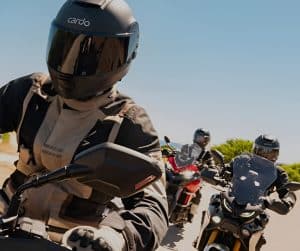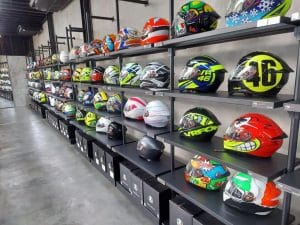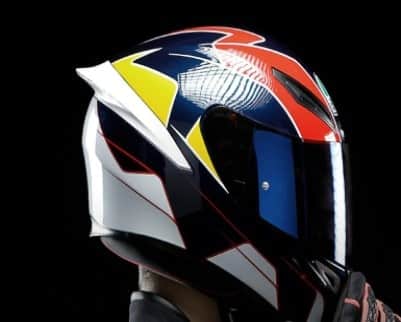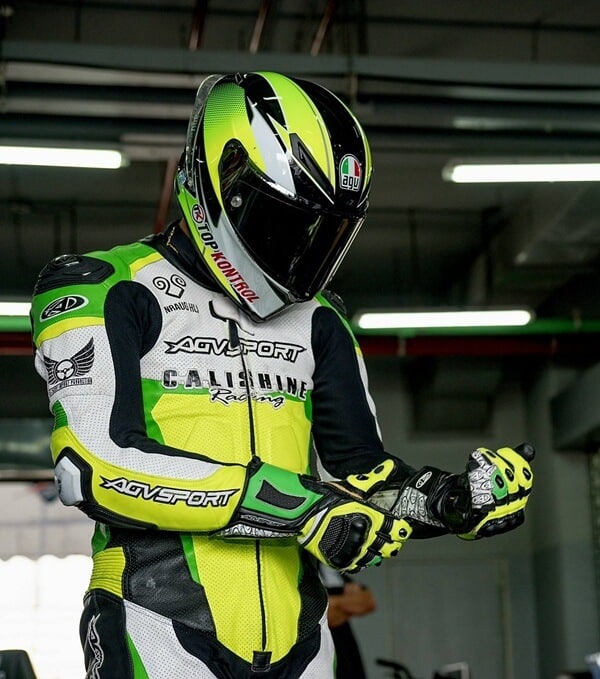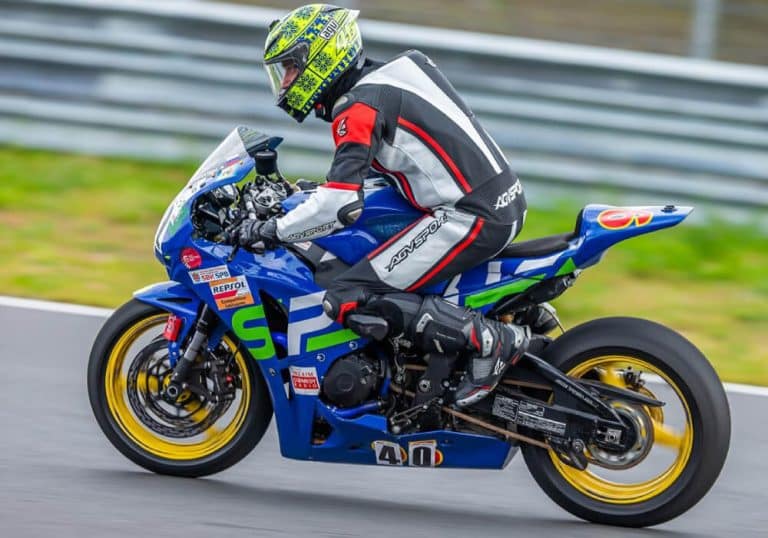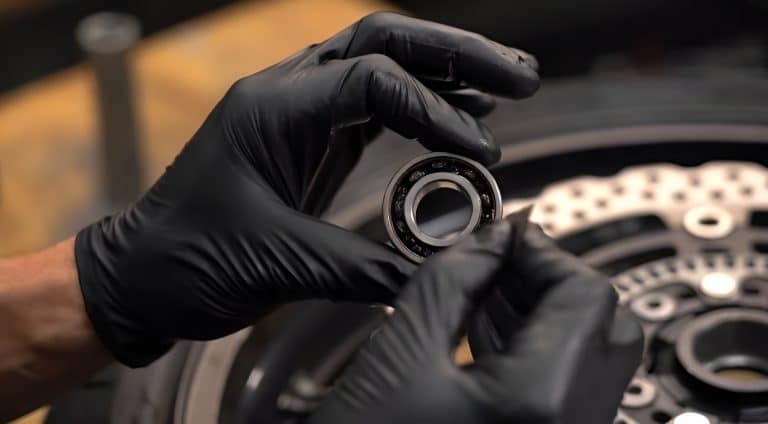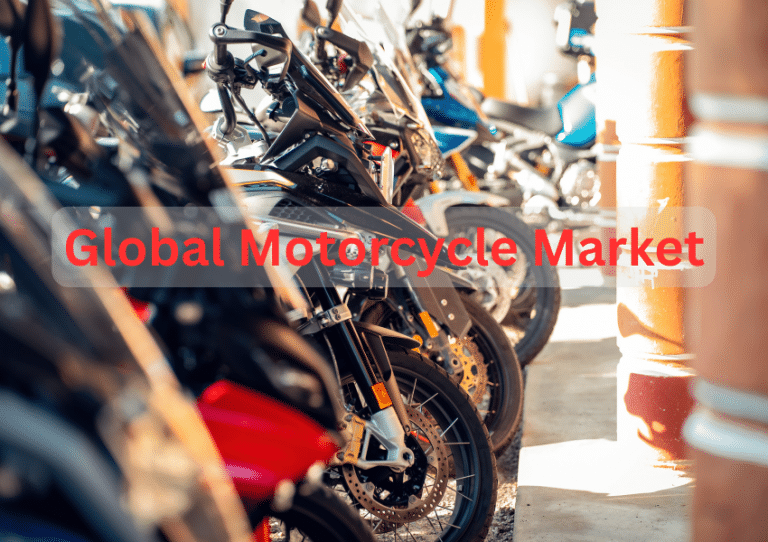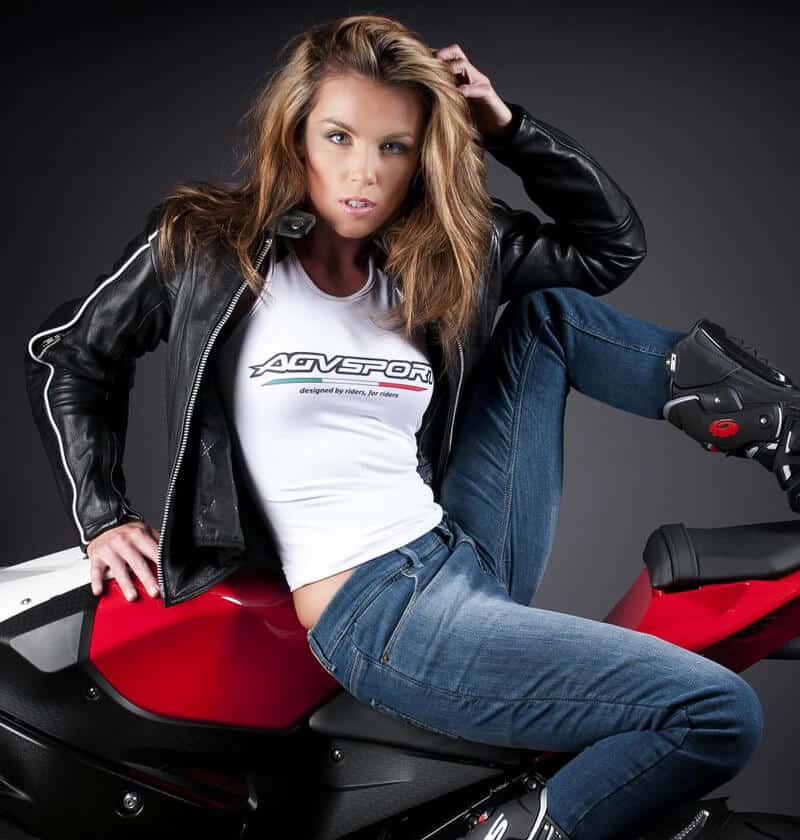Selecting the fastest 400cc motorcycles involves more than just looking at top speed. It’s about how various factors come together to create an exceptional riding experience. While top speed is a key metric, achieving and sustaining it really counts. A lighter curb weight contributes to faster acceleration and agile handling, making the bike not only fast but also nimble and responsive.
Horsepower and torque are essential for a thrilling ride. Horsepower provides the engine’s raw power, enabling high speeds, while torque delivers a strong, immediate burst of acceleration. Both factors combine to give you a bike that feels lively and powerful, accelerating quickly and reaching top speeds with ease.
Engine configuration and displacement also play a crucial role in performance. The engine design affects how power is delivered, whether it’s through smooth, high-revving power or strong low-end torque. Displacement, or engine size, influences the bike’s power output, balancing performance with control. Considering these elements together gives a full picture of which 400cc motorcycles excel in speed and overall riding enjoyment.
Top 8 Fastest 400cc Motorcycles in 2025
| Motorcycle Model | Category | 0-60 mph | Top Speed | Horsepower | Torque |
|---|---|---|---|---|---|
| Kawasaki Ninja ZX-4RR | Fastest Today | 4.0 sec | 151 mph | 76.4 hp | 28.8 lb.-ft. |
| Kove 450RR | Best Lightweight | 4.2 sec | 137 mph | 69.7 hp | 28.7 lb.-ft. |
| Kawasaki Ninja 400 | Best Value | 4.35 sec | 116.7 mph | 44.8 hp | 28.8 lb.-ft. |
| Kawasaki Z400 | Best Comfort | 4.5 sec | 112 mph | 44 hp | 28 lb.-ft. |
| KTM RC 390 | Best Track-Ready | 4.24 sec | 112.5 mph | 44 hp | 27.3 lb-ft |
| Triumph Speed 400 | Best Handling | 4.2 sec | 110 mph | 39.5 hp | 27.5 lb.-ft. |
| Husqvarna Svartpilen 401 | Best Urban Style | 4.1 sec | 110 mph | 45 hp | 27.3 lb.-ft. |
| KTM 390 Duke | Best Performance | 4.0 sec | 105 mph | 44.3 hp | 28.8 lb.-ft. |
As a rider with over 50 years of motorcycle experience, I know that speed isn’t the only thing that matters. So, when I put together my list of the top 8 fastest 400cc motorcycles, I evaluated each bike on more than just top speed. My range is specific—between 373cc (KTM RC 390) and 443cc (Kove 450RR), with 399cc being the sweet spot.
I also considered curb weight, horsepower, torque, acceleration, and engine configuration—because every factor plays a crucial role in how a bike performs on the road. From the adrenaline of quick acceleration to the smoothness of high-speed handling, every detail counts.
For this list, I limited my choices to motorcycles that reach at least 105 mph in top speed, as higher speeds often indicate greater power and stability at fast paces. To ensure fairness, instead of focusing on quarter-mile times under 10 or 12 seconds, I analyzed their 0 to 60 mph times, capping the selections at a maximum of 4.5 seconds. And just to be clear, I’m only considering production models—no concept bikes, customs, or racing-only machines.
Acceleration times can vary due to rider skill, track surface, and weather conditions, so even identical bikes may perform differently. With that said, here are my 2025 picks:
1. Kawasaki Ninja ZX-4RR

The Kawasaki Ninja Zx-4RR, building on the legacy of the Indonesian ZX-25R, injects fresh excitement into the small-displacement sport-bike segment, especially for riders who thought the era of high-revving inline-fours was long gone. Its compact 399 cc DOHC inline-four engine pushes the limits, combining speed, power, and advanced tech rarely found in the 400 cc class.
For 2025, Kawasaki limits changes to fresh paint and graphics—everything from the engine and chassis to suspension and electronics remains identical to the 2023 and 2024 ZX-4RR. Choose between the eye-catching KRT Edition (iconic ZX-10R WSBK yellow-and-black livery) or the understated SE model in silver and black.
A High-Revving Powerhouse
The ZX-4RR’s performance is its most defining feature. With an estimated 76.4 horsepower in Europe and Japan (rising to 79 hp with ram-air), it’s not just the most powerful 400cc sport bike but also the fastest, capable of reaching a top speed of 151 mph. An untethered ECU flash unlocks full power, and optimized sprocket-and-ratio gearing keeps the engine in its peak powerband, so 0–60 mph takes about 3.3 seconds.
The U.S. and Canada models, though capped at around 56.3 horsepower for emissions and noise compliance, still delivers an impressive riding experience, with the engine screaming all the way up to 15,000 rpm. Its 0-60 mph time of 4.0 seconds is remarkable, giving you a thrill that’s often reserved for much larger bikes.
Superb Handling and Rider Aids
That kind of engine potency calls for an equally capable chassis—one worthy of a full-fledged superbike. And so, the ZX-4RR borrows Showa’s Separate Function Fork Big-Piston (SFF-BP) inverted 37 mm front forks and Balance Free Rear Cushion Lite (BFRC-Lite) shock from the ZX-10R, yielding sharp, track-capable handling while still absorbing street-bump harshness.
Dual 290 mm front discs with radial-mount monobloc calipers and ABS provide strong, confidence-inspiring stopping power.
Meaningful Tech and Rider Aids
Beyond chassis and brakes, Kawasaki outfits the ZX-4RR with a full electronics suite. The 4.3-inch full-color TFT display offers Street and Circuit modes plus Bluetooth connectivity via the Rideology app. Four ride modes (Sport, Road, Rain, Rider) pair with 3-stage traction control (KTRC) and a bi-directional quick-shifter for smooth up-and-down shifts.
Ergonomics strike a smart compromise between track-focused riding and everyday comfort. Its riding position is more aggressive than the Ninja 400’s, yet considerably softer than a ZX-6R or ZX-10R. At 6′1″, I find it comfortable even during over two-hour sessions, with no undue wrist or back strain.
Having ridden the more upright Yamaha R3, I can clearly feel the ZX-4RR’s sharper, sportier geometry, but without the fatigue you’d expect from a full supersport.
Bold and Ready for Action
With its Kawasaki Racing Team graphics and race-inspired fairings, the ZX-4RR looks every bit the track machine. Yet it tips the scales at just 415-pound curb weight, which is light enough for snappy corner carving, yet stable at speed.
High Performance, High Cost
While the 2025 ZX-4RR brings superbike-level features, it comes at a cost—$9,699 for the standard model (with KRT and Anniversary editions about $200 higher). That price puts it on par with the larger Kawasaki Z900, making the ZX-4RR one of the most expensive 400cc motorcycles.
But for those seeking the adrenaline-pumping experience of an inline-four in a lightweight package, it’s a price well worth paying.
2. Kove 450RR

The Kove 450RR is an exciting addition to the growing small-capacity, multicylinder sportbike market, and it’s gearing up to challenge the likes of the Kawasaki Ninja ZX-4RR with its own unique blend of power, weight savings, and aggressive pricing.
Like its Kawasaki counterpart, the 450RR gets a facelift for 2025, featuring redesigned fairing side panels with reshaped upper air outlets. Other bodywork, including the tank, seat, front fender, and belly pan, remains unchanged, and mechanical components carry over largely intact.
Punchy Performance in a Small Package
Driving the Kove 450RR is a 443cc four-cylinder engine that packs a serious punch, producing an impressive 69.7 horsepower at 13,000 rpm, along with 28.7 lb.-ft. of torque at 10,500 rpm. Its redline reaches a screaming 16,000 rpm, which is higher than the ZX-4RR’s, giving it a thrilling powerband. It’s clear this bike is built for riders who love to rev.
The central air intake, now sitting above a mustache-style front wing in the 2025 version, provides a ram-air boost at speeds over 93 mph, adding an extra 3 horsepower and raising total output to 73 hp. Flanking it, the side-mounted, biplane-style winglets blend into a central span that forms the lower edge of the intake. Their downward-swept ends evoke the look of the 2025 Ducati Panigale V4, even if not directly replicated.
While the Kove might fall short of the Ninja ZX-4RR’s top speed of 151 mph, it still commands a respectable 137 mph in its stock form. But the Kove’s 51-pound weight advantage (curb weight of 364 pounds) gives it a better power-to-weight ratio, meaning it might have quicker acceleration, especially with its torque kicking in earlier.
Lightweight and Agile: A Rider’s Dream
The Kove 450RR benefits from its lightweight trellis frame, weighing in at just 15.4 pounds, which contributes to its overall 364-pound curb weight. The lightness gives it an agile, responsive feel that’s likely to be appreciated in both street and track environments. The low seat height of 31.3 inches (adjustable to 30.7 inches) makes it more accessible to a wide range of riders, adding to its appeal.
Kove vs. Kawasaki: A Head-to-Head Battle
When compared directly with the Kawasaki Ninja ZX-4RR, the Kove has several advantages, but also some trade-offs:
- Power: The Ninja edges out the Kove in raw horsepower, with the Kawasaki delivering 76.4 hp (and 79 hp with ram-air). But Kove’s no slouch at 69.7 hp, and that gap narrows when you factor in Kove’s ram-air effect.
- Torque: Kove’s 28.7 lb.-ft. of torque beats the Ninja’s estimated 27.5 lb.-ft., and the Kove delivers its torque earlier, which could translate to faster acceleration off the line.
- Weight: The Kove’s 51-pound weight advantage gives it a better power-to-weight ratio—0.192 HP per pound vs. 0.184 HP per pound for the Ninja.
- Top Speed: The Ninja tops out at 151 mph, while the Kove falls a bit behind at 137 mph.
Pricing: The Kove’s Biggest Edge
Perhaps the biggest reason to look at the Kove 450RR is the price. In China, it starts at just over $5,000, with the Performance version coming in at around $5,600. That’s a steal compared to the Ninja ZX-4RR, which commands nearly $10,000. Even if international buyers face some additional costs due to import duties, the Kove still represents significant savings over its competitors.
Availability and What to Expect
Right now, the Kove 450RR is mainly available in China, but the company has ambitions to expand globally, with a presence already forming in the U.S. Whether the bike will retain its full power in other markets is still up in the air, but if Kove follows the path set by its 800X and FSE 450R Rally, we’re likely to see this small-displacement sportbike remain a highly affordable option for riders everywhere.
3. Kawasaki Ninja 400

If you thought the Ninja 300 set a high bar, the Kawasaki Ninja 400 takes that bar and raises it to new heights. It redefines what a 400cc sportbike can offer, combining performance, style, and value in a way that’s tough to beat in this class.
For 2025, while the mechanicals remain unchanged, Kawasaki introduces new graphics and two fresh color options for the Japanese market. The updated KRT Edition now comes in either Metallic Matte Graphene Steel Gray and Metallic Flat Spark Black or Metallic Spark Black and Metallic Magnetic Dark Gray—moving away from the brand’s signature Lime Green scheme. And yet I can’t help but feel a pang of nostalgia and, honestly, a little disappointment. Swapping it out feels like retiring a champion’s race number—practical, perhaps, but undeniably bittersweet.
A Performance Leader
As a Ninja 400 owner, I can tell you firsthand where the magic lies: its 399 cc parallel-twin engine. With 44 horsepower—a solid jump from the Ninja 300’s 39 hp—and a flat torque curve of 27 lb.-ft. compared to the Ninja 300’s 20 lbs-ft., it delivers a thrilling yet smooth ride that’s exciting from the get-go to both beginners and seasoned riders alike, rivaling even long-standing KTM RC 390.
Accelerate with Precision
And the Ninja 400 knows how to put that power to good use. With a 0-60 mph time of just 4.14 seconds, it easily outpaces the Ninja 300’s 5.6 seconds, and you can feel the thrill right off the line, making it one of the quickest in its class. Open the throttle, and this beast hits an impressive top speed of 112 mph, edging out the Ninja 300’s 110 mph. No doubt about it, it’s fast, agile, and always ready to unleash its full potential on the open road.
Lightweight and Agile
At just 371 pounds, the Ninja 400 is noticeably 8 pounds lighter than the Ninja 300’s 379 pounds, and that reduction in weight directly enhances agility. Whether you’re navigating city streets or attacking tight corners, its nimble handling makes every ride feel effortless and fun.
Aggressive Styling Meets Practicality
The Ninja 400’s design pulls inspiration from Kawasaki’s supersport lineup, with a look that’s aggressive and race-inspired. It resembles the ZX-6R and ZX-10R, giving it an unmistakable presence on the road. It look as fierce as it performs.
And with a starting price of $5,299, it offers tremendous value for riders looking for a stylish yet affordable sportbike. For those who are just getting started or prefer a little extra safety, spending the extra $400 for the ABS model is worth every penny. The added control and stability, especially in tricky conditions, make it a wise choice.
Excellence Extends Beyond the Streets
If you need proof that the Ninja 400 is more than just a pretty face, check out the 2025 Supersport 300 World Championship. MTM Kawasaki is lining up Petr Svoboda and Roberto Fernandez on Ninja 400s, with Mirko Gennai and Carter Thompson rounding out the squad. It isn’t just a commuter bike—it’s a competitive machine born for the track, with real-world racing success to back up its performance.
4. Kawasaki Z400

Yes, another Kawasaki. And if you’re wondering why, take a quick look at Kawasaki’s model range over the past decade, and you’ll see they’re dead serious about offering something for everyone. Back in 2015, Kawasaki had just one naked sport model—the Z1000. Fast forward to 2019, and now the lineup includes six naked models, ranging from the Z125 to the Z900. And that’s not even counting the different variations of the Z900 (the Z900, Z900RS, and Z900RS Cafe).
In the same year, Kawasaki introduced the Z400 for riders who loved the Ninja 400 but weren’t fans of its fully-faired, sportbike styling. Kawasaki recognized that not every rider cares about spec sheets. Instead, they’re drawn to aesthetics and comfort, and the Z400 aims to capture those riders. So, while the Ninja 400 and Z400 share a lot of DNA, they’re quite different in some key areas.
Stripped Down, Stand-Out Style
The most obvious difference? The Z400’s naked design. You won’t find the same full fairing setup here, and that’s a deliberate choice. Not every rider vibes with the look of a sportbike, and the Z400’s exposed frame and aggressive styling offer an alternative that’s just as sharp but feels less “race-track ready” and more “street-smart.”
Power Without Pretense
Underneath, 90% of the Z400 is basically the same as the Ninja 400. It rocks the same 399cc parallel-twin engine, churning out 44 horsepower at 10,000 rpm and 28 lb.-ft. of torque at 8,000 rpm. Its engine is as approachable for new riders as it is fun for experienced ones. It’s perfect for commuting, with fuel efficiency pushing the high 50s in mpg if you take it easy.
But when you open it up, especially above 7,000 rpm, it becomes a thrill-seeker’s playground. It revs freely and keeps you grinning through the twisties.
Lightweight and Nimble
Handling on the Z400 remains light and nimble, thanks to its ultra-light weight. At 364 pounds, it’s even lighter than the Ninja 400 (which weighs in at 371 pounds), making it one of lightest street bikes on the market. And that makes it super approachable for new riders or anyone looking for a responsive ride. Plus, with the same 30.9-inch seat height as the Ninja, shorter riders won’t feel intimidated.
Comfortable Ergonomics, Upright Position
Ergonomically, there’s a subtle but significant change. The Z400 ditches the Ninja’s clip-ons for a more traditional handlebar that sits about two inches taller and a bit wider, creating a more upright, comfortable riding position. The result? The Z400 better suited for daily commutes or longer rides where the more aggressive posture of the Ninja might wear you out.
Smooth Throttle Response
What’s great about the Z400 is its smooth, linear throttle response. The power comes on evenly, without any nasty surprises. But when you hit that sweet spot above 7,000 rpm, the engine truly comes alive. I found it hard to resist holding onto third and fourth gear a little longer just to enjoy the extra kick.
Capable on the Highway
On the highway, the Z400 cruises along effortlessly at 70 mph, turning just 6,500 rpm. With a redline at 12,000 rpm, there’s still plenty left in reserve, so you never feel like the bike’s straining at higher speeds. Just be prepared to feel the wind a little more—without the Ninja 400’s fairings, the Z400 doesn’t offer the same wind protection.
Slipper Clutch for Effortless Riding
Like the Ninja, the Z400 comes equipped with a slipper-assist clutch, making the clutch pull incredibly light. It’s best for newer riders or those who prefer a more relaxed, easy-going feel in traffic. That said, for aggressive riding, the clutch can feel a little too light—almost to the point where it feels like it’s slipping. Kawasaki reassures us it’s just that sensitive, but it’s something to keep in mind.
Softer Suspension for a Softer Ride
One area where Kawasaki made a noticeable change is the suspension. The Z400’s suspension has been softened compared to the Ninja 400. The front fork uses straight-rate springs rated at 13 N/mm (compared to the dual-rate 14-21 N/mm springs on the Ninja), and the rear shock spring has been softened by 10%, from 94 to 85 N/mm. The change gives the Z400 a more forgiving ride, especially over rough city streets.
Minor Drawbacks
If I had to nitpick, I’d say the mirrors on the Z400 could be better. On the Ninja, they’re mounted on the fairing and give you a clear view of what’s behind you. The Z400’s handlebar-mounted mirrors, by contrast, tend to show more of your arms than the road behind. I didn’t notice any vibration myself, but I’ve heard some riders mention it as a concern.
Mechanically, the 2025 Z400 stays the same—Kawasaki focused on freshening up the look with a Metallic Spark Black and Metallic Moondust Gray scheme, highlighted by a lime-green frame. Everything else under the skin remains unchanged.
5. KTM RC 390

If you’re into sport motorcycles, the KTM RC 390 is a name you can’t ignore. Known for its punchy single-cylinder engine and razor-sharp handling, it has earned its reputation as one of the best entry-level sportbikes ever made. Light, nimble, and affordable (at a starting price of $5,799), the RC 390 is a beginner’s dream—and it’s equally at home on the track.
Racing Pedigree
And its own one-make racing cup proves just how race-ready it is. Sure, it won’t outgun a 600cc sportbike on the freeway, but in the corners it shines, thanks to KTM’s spot-on ergonomics and razor‑sharp handling. Agile and confidence-inspiring, it’s a perfect match for both newcomers finding their riding legs and seasoned track enthusiasts.
Punchy Single-Cylinder Performance
At the core, the RC 390 packs a refined 373 cc liquid-cooled single-cylinder four-stroke engine that puts out around 44 hp (32 kW) and 27 lb.-ft. (37 Nm) of torque. At about 364 lbs. (166 kg) wet, it stays incredibly nimble and responsive. That lightweight, razor-sharp setup rockets you from 0 to 60 mph in 4.24 seconds—delivering genuine track-inspired thrills in a compact, street-legal package.
High-Tech Features
KTM didn’t stop at engine performance—they’ve loaded the RC 390 with rider-assist tech to take your ride to the next level:
- Ride-by-Wire Throttle: Refined engine mapping delivers instant, precise throttle response.
- Cornering ABS (with Supermoto Mode): Confidence-inspiring braking even when you’re leaned over—just like on the Husqvarna Svartpilen 401.
- Spin Adjuster Traction Control: Multiple modes let you dial in the exact level of rear-wheel slip for your riding style.
- Slipper Clutch & Optional Quickshifter: Ultra-smooth up-and-down shifts without clutch work, keeping your focus on the road (or track).
Beneath it all, stainless-steel headers feed an aluminum exhaust that delivers a satisfying, throaty growl perfectly in sync with the bike’s aggressive styling. While the six-speed gearbox rewards precision, the quickshifter ensures seamless transitions through the gears, letting you make the most of every ounce of power.
Ready for 2025
KTM’s already hard at work on the 2025 RC 390, but it’s still in development and hasn’t hit showrooms yet. Expect Moto3/RC 8C-inspired styling—think a single-pod fairing, bubble windscreen, and revamped headlamps.
6. Triumph Speed 400

Triumph’s 2025 lineup—Speed 400, Scrambler 400 X, the new Scrambler 400 XC, and the India-market Speed 400 MY25—are making serious waves this year, but let’s be real—one stands above the other. If you’re sticking to the pavement, the Speed 400 is hands-down the winner. No question about it!
In fact, I’d say the Speed 400 is one of the greats not just in entry-level motorcycling, but one of the great bikes of 2025, period! The handling is spot-on for a bike in this price range, the engine is a blast, and its 90 mph top speed isn’t just a number—it’s a smile waiting to happen. At $5,295 (just $300 more than the 2024 model), this bike delivers way more than it costs.
Classic Style, Modern Comfort
For 2025, Triumph has also upgraded the seat cushioning, added adjustable brake and clutch levers for greater comfort, and fitted beefier Vredestein radial tires—so riders of all shapes and sizes can ride in confidence. Everything else you love about the Speed 400 remains unchanged.
Canyon Carver with Classic Style
When Triumph added the Speed 400 to its Sport Classic range, it knew exactly what it was doing. If you’ve ever ridden the Speed Twin 1200—Triumph’s Best Standard Motorcycle of 2022, 2023, and 2024—you’ll feel that DNA right away.
The Speed 400 is built for the twisties. It’s got effortless turn-in, pinpoint precision, and stability that makes you feel glued to the road. Whether you’re hitting tight canyon roads or just cruising through town, this bike is in its element.
Punchy Engine with Surprising Power
Under the tank, you’ve got a 398cc DOHC liquid-cooled single-cylinder engine. That might not sound like much, but Triumph squeezed out 39.5 hp at 8,000 rpm and 27.7 lb.-ft. of torque at 6,500 rpm. Those numbers translate into real-world fun.
It’s a rev-happy little engine that’s plenty punchy without feeling like you have to constantly shift to keep it alive. You can torque out of a corner or pull from a stop without a lot of effort, and then as the revs climb, you feel it pick up steam. Third and fourth gear? You could live there all day.
Speed vs. Scrambler – Where It Stands
Now, the Speed and Scrambler 400 X have different gearing—the Speed has a taller final drive, while the Scrambler is a bit shorter. Honestly, you’ll feel the difference, but the Speed still jumps forward with that same eager attitude, even when you’re pushing 398cc.
Sure, the Scrambler weighs about 20 pounds more, but both bikes hit a wall right before 100 mph. If you’ve got enough room, the Speed 400 will just tick past 100 mph. Not bad for a small single-cylinder, right?
Ergonomics that Fit the Rider
The 31.6-inch seat height (0.5 inches taller than the 2024 model) is comfortable enough for all-day riding, but I’m over 5’10”, and after a long stretch I do feel the seat-to-peg distance get a bit tight. Still, the seating position is great for most riders. The slight forward reach to the bars is easy on your wrists and back, so you can either tuck in for speed or relax when cruising. In short, the ergonomics adapt effortlessly to whatever riding style you’re in the mood for.
A Few Small Gripes
No bike is perfect, and the Speed 400 has a couple of things that could be better. The levers feel a bit cheap, and the banjo bolts on the brake system aren’t exactly top-shelf. But honestly, that’s nitpicking. And while it doesn’t have a fancy TFT dash, the LCD unit with an analog speedo does the job just fine. Plus, Triumph was smart enough to include a USB-C plug for your phone—perfect for navigation or charging on the go.
7. Husqvarna Svartpilen 401

Husqvarna is known for its motocross heritage, but don’t let that fool you—there are plenty of beautiful bikes in their portfolio that aren’t just for the dirt. Meet the Svartpilen 401, a stylish and practical city bike that proves Husqvarna can play in the urban sandbox too.
t’s based on the KTM 390 Duke, but here’s the kicker: the Svartpilen costs less than $200 more and offers the same core ingredients—a 398.6cc single-cylinder engine, trellis frame, and top-shelf components.
Stability Meets Confidence
For 2025, the Svartpilen retains the same proven mechanicals from 2024 but adds a few thoughtful tweaks: a marginally longer wheelbase for improved stability, and a 15 mm lower seat—now 805 mm (31.7 in) versus last year’s 820 mm (32.3 in)—which brings you closer to the bike’s center of gravity for sharper handling and greater confidence at low speeds.
A Single-Cylinder That Divides Opinion
The Svartpilen 401 is powered by a circa 399cc single-cylinder engine, which might be a love-it-or-hate-it deal for some riders. It’s been bumped up from its original 373cc to meet Euro5+ emissions standards, and it’s paired with a 13-liter fuel tank (a nice increase from the 9.5 liters on the original).
But let me be clear: this isn’t your smooth parallel-twin Honda CL500 engine. The single-cylinder setup makes the bike more vibey—especially in the higher revs—but that’s part of the charm if you’re into it. You’ll feel those vibrations in your fingers and toes, but that’s what gives it character.
How Fast Is Fast Enough
If you’re wondering how fast the Svartpilen 401 can go, it tops out around 160 km/h (99 mph). And as for acceleration? It can hit 100 km/h (62 mph) in just 5.38 seconds. So, if you’re curious about its 0-60 mph time, that translates to around 5.3 seconds. Not bad for a city scrambler, right?
Lightweight and Agile for City Life
Weighing in at just 350 pounds without fuel, the Svartpilen 401 feels incredibly nimble. Its steel trellis frame is both sturdy and lightweight, giving you confidence when navigating traffic or taking tight corners. The WP suspension offers 150mm of travel front and rear, meaning it handles bumps and rough patches with ease.
Combine that with the bike’s compact size, and you’ve got something that’s perfect for zipping around the city.
Solid Build Quality
Husqvarna didn’t skimp on the build quality, either. The Svartpilen 401 is equipped with WP Apex forks and shock, offering five-step adjustability. That means you can fine-tune the suspension to your liking, whether you’re carving through city streets or heading out for a weekend ride.
Add in easy-to-find backlit switchgear for after-dark riding, clutch-less Easy-Shift up-changes, and a crisp bonded-glass 5″ TFT display for swift mode toggling. Pair that with lean-sensitive cornering ABS featuring Supermoto mode and full-range traction control, and the Svartpilen starts to look like a steal for urban explorers.
Designed for the Modern Rider
In fact, Husqvarna markets the Svartpilen 401 as a bike for “urban explorers,” and they’re spot on. The right-to-sporty scrambler riding position delivers relaxed comfort with just the right edge—unlike the more conventional upright posture on the Suzuki GSX250R.
Add Bluetooth smartphone integration for hands-free connectivity, plus an Immobilizer Anti-Theft System that blocks unauthorized starts, and you’ve got a bike that blends practicality with fun. It just looks cool, too!
8. KTM 390 Duke

The KTM 390 Duke has always had the heart of a true super-naked. From the get-go, this Indian-built single-cylinder bike delivers punchy performance, aggressive styling, and a seriously fun riding experience. In 2024, KTM gave the Duke a near-complete makeover—claiming 90 percent of its parts are new—yet somehow preserved that signature Duke attitude.
For 2025, the “Corner Rocket” keeps its punchy mechanicals but scores some welcome comfort and tech upgrades:
- A standard seat height of 32.2 in (820 mm), with an optional PowerParts lower seat that drops it to 31.4 in (800 mm).
- A bonded-glass 5″ TFT display with smartphone pairing, turn-by-turn navigation, and a configurable switch cube.
- Cruise control comes standard for the first time—ideal for those long highway runs or weekend tours.
Performance That’s Friendly Yet Fierce
Underneath, the LC4c single-cylinder engine carries over from 2024, displacing 399 cc—up from 373 cc in the 2023 model—thanks to a 4 mm longer stroke. The result? A bump in power from 42 hp to 44 hp, making it quicker off the line and even more capable for wheelies in third gear with just a flick of the clutch.
Yet, despite this feisty nature, the power delivery remains smooth and rider-friendly, making the Duke a perfect choice for newer riders who want a bit of thrill without intimidation.
Slick Design and Serious Upgrades
The slim steel trellis frame and cast-aluminum subframe still form the 390 Duke’s backbone, complemented by a sleek “banana” swingarm and right-side-mounted shock that frees up space for a lower seat and bigger airbox.
But the suspension is where things get serious: WP forks come with a five-way hand adjuster for rebound and compression, while the shock offers rebound damping and preload adjustment. Steering is light, and the brakes are powerful—all of which make it a blast to ride in the twisties.
Ready to Go
You’re not just getting a Bluetooth-enabled color dash here – you’re also equipped with advanced rider aids like cornering traction control and ABS. Want to tweak settings for more safety or a bit more thrill? It’s all possible with this setup.
The backlit switches, self-canceling indicators, and full LED lighting add to the convenience. You won’t find these on just any bike in this price range.
Worth Every Penny
At $5,899, the KTM 390 Duke competes directly with its rivals but delivers more bang for your buck. Sure, it’s a bit pricier than the BMW G310R ($5,190) or the CF Moto 450NK ($5,399) , but with all the tech and performance packed in, the Duke offers unmatched value. It feels like a mini supermoto with attitude!
If you’re after something a bit more mellow, its competitors might be a better fit. But if you want a bike with heart, soul, and a dash of rowdiness, the KTM 390 Duke is hard to beat.
FAQs — I Have the Answers!
Q: What Is the Fastest 400cc Motorcycle?
The fastest 400cc motorcycle today is the Kawasaki Ninja ZX-4RR, capable of reaching a top speed of 151 mph and accelerating from 0-60 mph in just 4.0 seconds—with tuned versions dipping as low as 3.3 seconds.
Q: Which Is the Most Powerful 400 cc Bike?
The most powerful 400 cc bike today is the Kawasaki Ninja ZX-4RR (or ZX-4R in standard trim), producing 76.4 hp and 29 lb.-ft. of torque, with ram-air boosting peak output to 79 hp. No other 399-400 cc production bike on the market comes close to matching its power.
Q: What Is the Maximum Speed of a 400cc?
The maximum recorded speed for a production 400 cc motorcycle is 151 mph (243 km/h) achieved by the Kawasaki Ninja ZX-4R/RR. However, most 400cc bikes typically top out between 105 and 120 mph, depending on factors like engine type, aerodynamics, weight and gearing.
Information for this article was partially sourced and researched from the following authoritative government, educational, corporate, and non-profit organizations:
M/A

